Playground Physics
“Noa, what are you doing?” questions Jose.
“I’m giving this rock a swing!” giggles Noa as she embarks on her latest investigation into force and motion.
“Are you sure that will work?” James asks. “I think the rock will fall off!”
We all stop what we are doing to observe as Noa cautiously pulls the swing back a few feet and then lets it go.
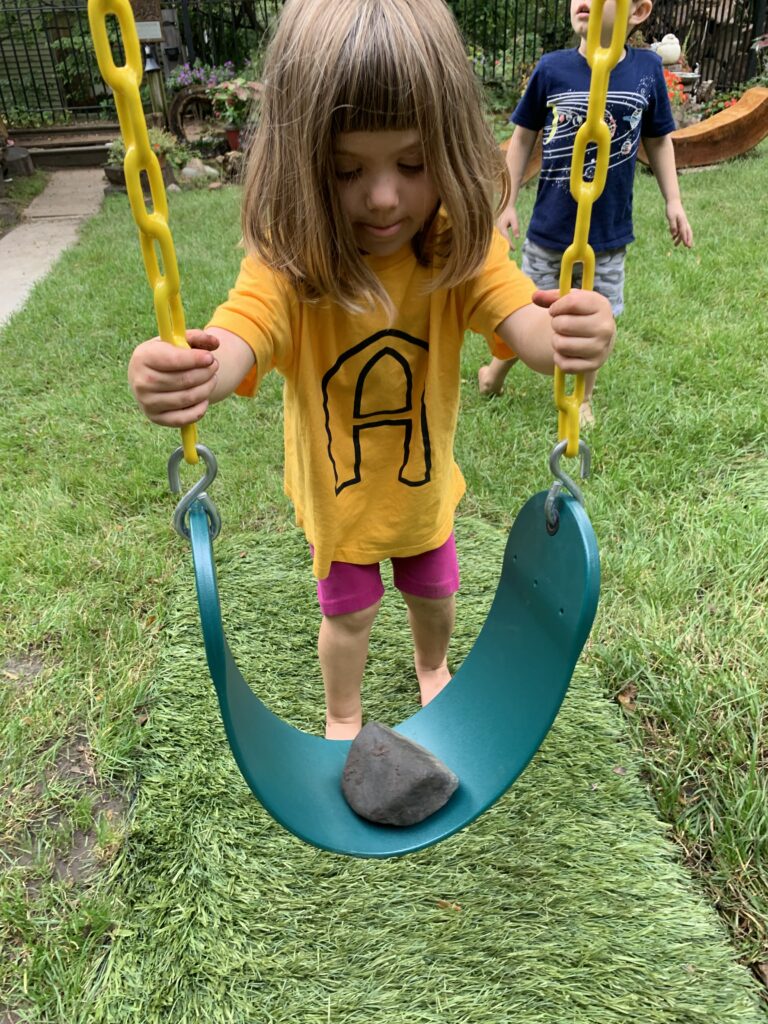
“Hey! It didn’t fall off!” James exclaims.
“How did you do that?” shouts Eleanor, who runs over with James to see what this latest investigation is all about.
“Well, sometimes the rock falls off. I think when I push it too hard and the swing gets jiggly, the rock falls off,” theorizes Noa.
She continues to experiment: “This time I pulled it. I think if I pull it, it stays on better than if I push it.”
Noa is conducting research, gathering information and developing theories.
This is physics! Look around your classroom. I bet you’ll see your students experimenting with physics as well.
Physics is simply the study of matter and how it interacts with energy and forces. Maybe it isn’t happening in the science area. Maybe it’s happening in the block area or the dramatic play area or, very often, on the playground!
Playground physics can happen on the slide, swings, teeter totter or climbing gym.
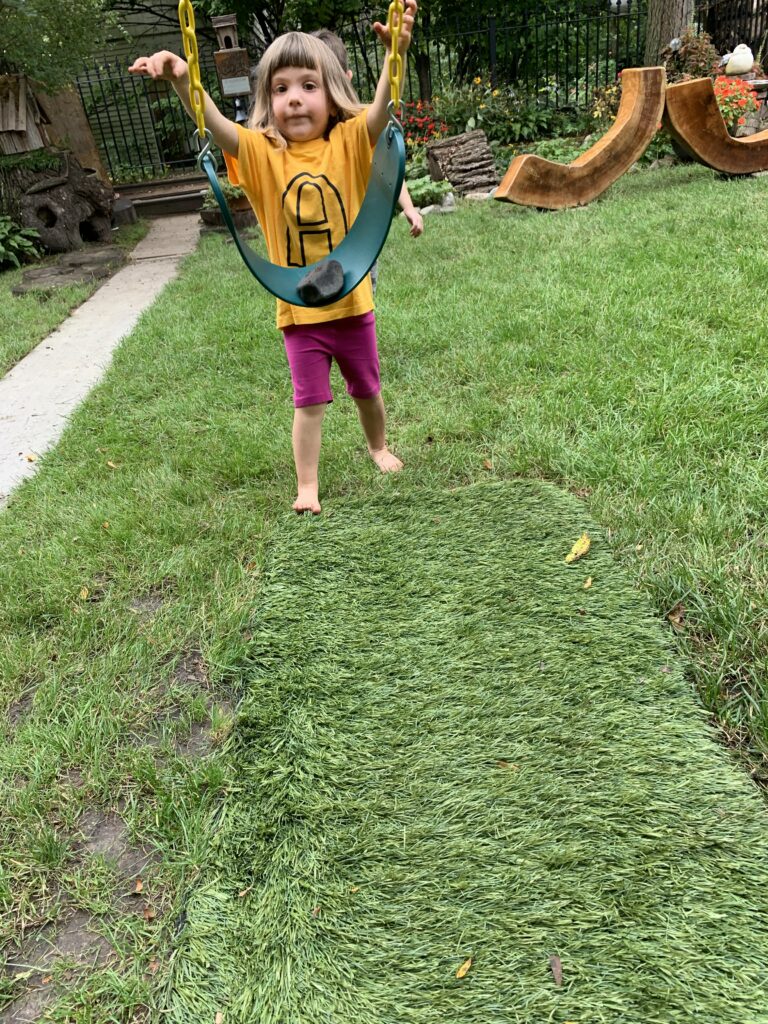
Noa’s curiosity and inquisitive nature have integrated STEM concepts into our playground play—and now the gang is intuitively carrying out the steps of the Scientific Method:
- Ask a question.
- Gather information and observe (research).
- Make a hypothesis (guess the answer).
- Experiment and test your various hypotheses.
- Analyze your test results.
- Present a conclusion.
I didn’t “learn” the Scientific Method as a child. I memorized it. But Noa and the gang are living it. They are out in the sunshine, creating their own hands-on version of the Scientific Method.
This is what child-led learning looks like! Our playground is our outdoor laboratory—and the children are constantly conducting scientific investigations to test out their hypotheses.
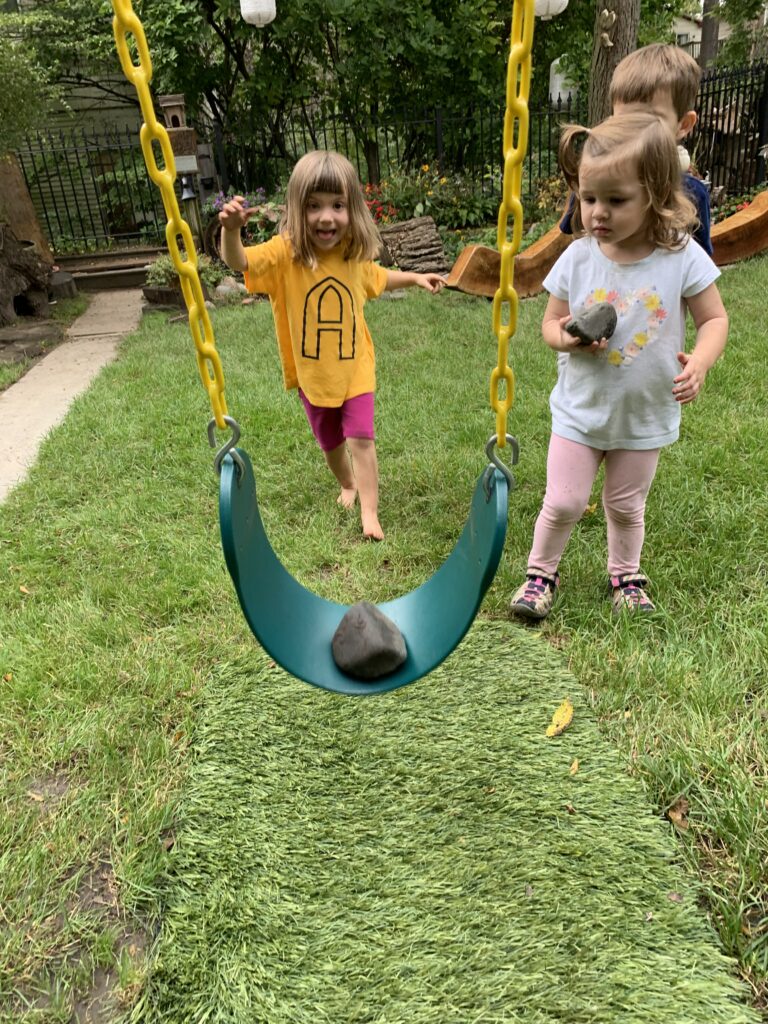
“What if you don’t push it very hard?” asks Eleanor. “Then will it stay on?”
“I think sol! Let me try it,” confirms Thalhah as she joins in the experiment.
“I think it will be too fast and bumpy,” Saaliha interjects.

I listen while the children make predictions, test their predictions and tweak their techniques as they work their way to a conclusion.
Sure, I could “introduce” the steps of the Scientific Method. But why would I interrupt this collaborative investigation—and the learning that is happening at this very moment? (After all, Step #1 of the Scientific Method is “Ask a question”!)

Do I want to interrupt these children who are discovering that even small amounts of motion and force can propel a pendulum?
Playground swings are pendulums! Noa and the gang are learning about pendulums, gravity, force, motion, inertia, push, pull, simple machines and … Newton’s Law!
We are exploring advanced science concepts as we play with a swing and a rock on a preschool playground.
See how much learning can happen when we give children the time, materials and space to explore?
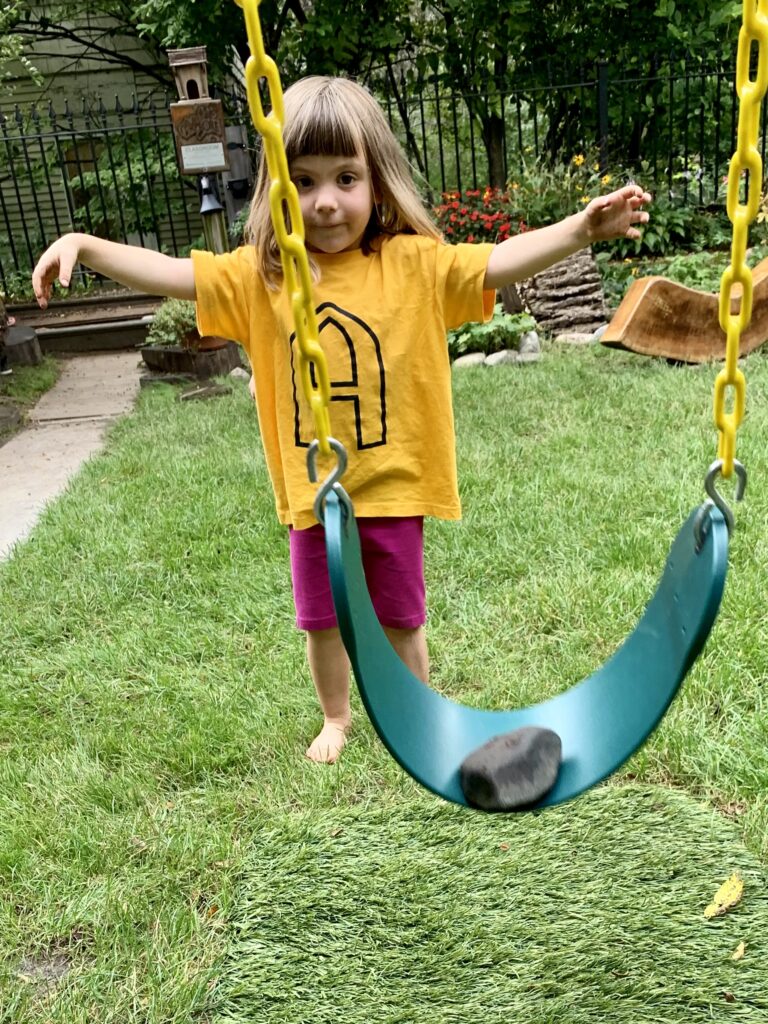
There will many opportunities to discuss any or all of these scientific terms and topics when we return to the classroom. I usually grab a book or two before naps to connect the dots between the story and what happened earlier on the playground.
The experiment will also weave its way back into our conversations during lunch or snack, in the block area or at the art center. There will be many opportunities to expand on this moment of child-led play.
As the research continues, the children replace the rock with a dinosaur—and the investigation deepens.
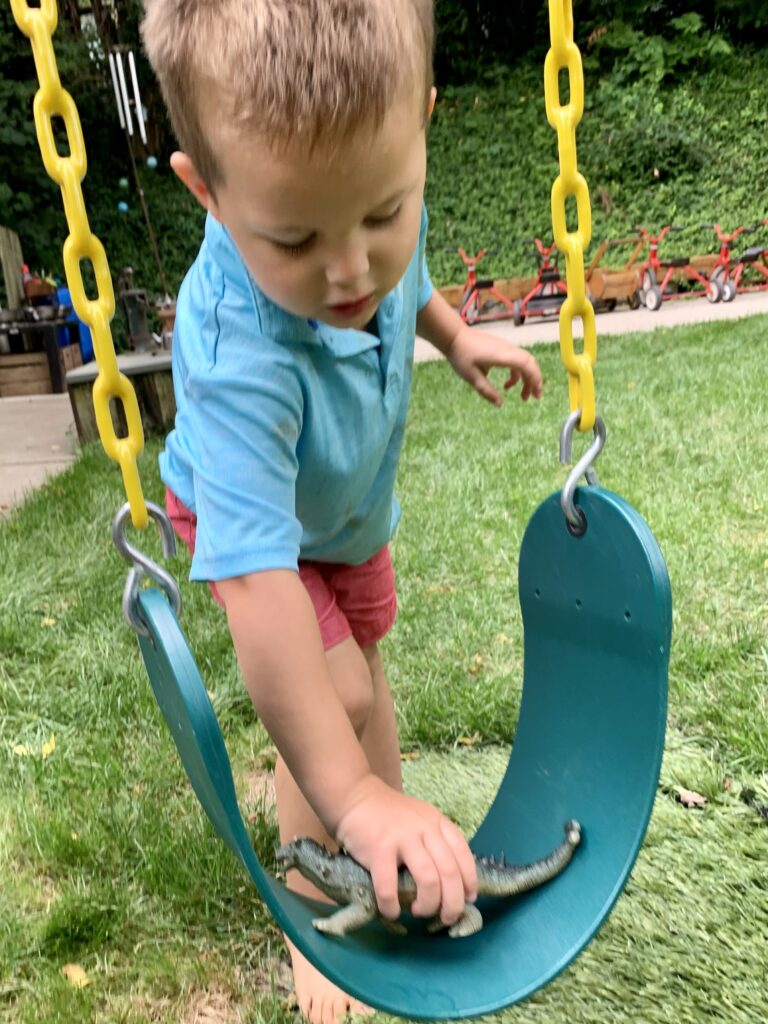
As educators, this is our chance to document the learning! Consider yourself the collector of the data for this scientific investigation!
Collect data by taking photos and documenting conversations. Note what worked and what didn’t. Capture the children’s discussions and theories as they work through their ideas. Then grab those assessment sheets and check off most of your science standards!
There is a lot of science behind all of that fun. What looks like play may actually be your science curriculum for the week!

Young children are natural scientists who are constantly exploring the world around them.
Science stimulates inquiry-based learning, hones problem-solving skills and supports the development of social and language skills.
What could be more fun than playground science?